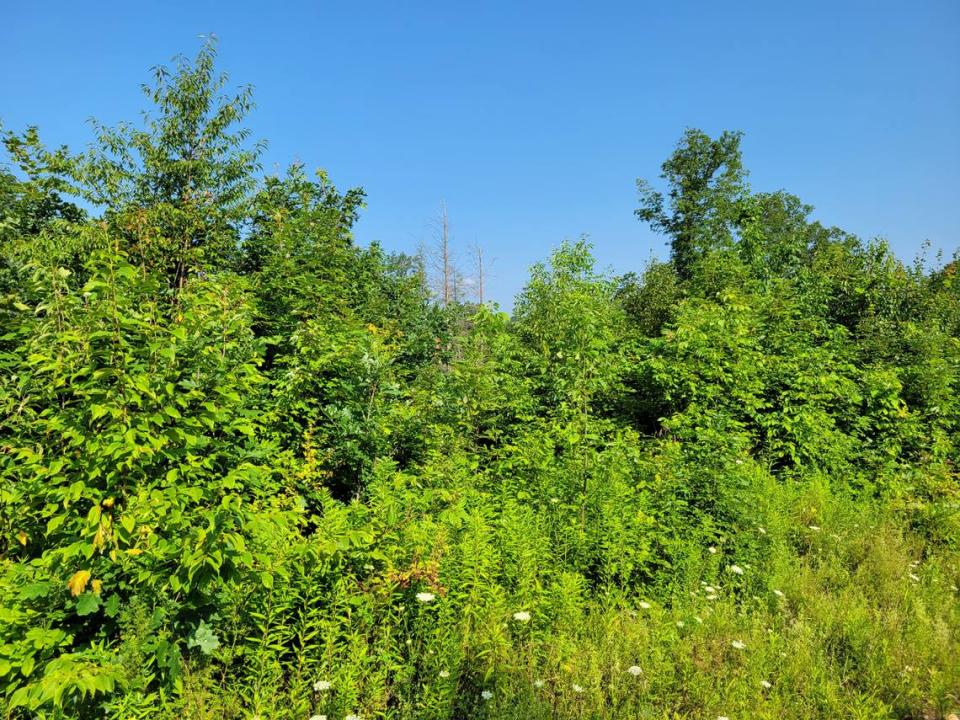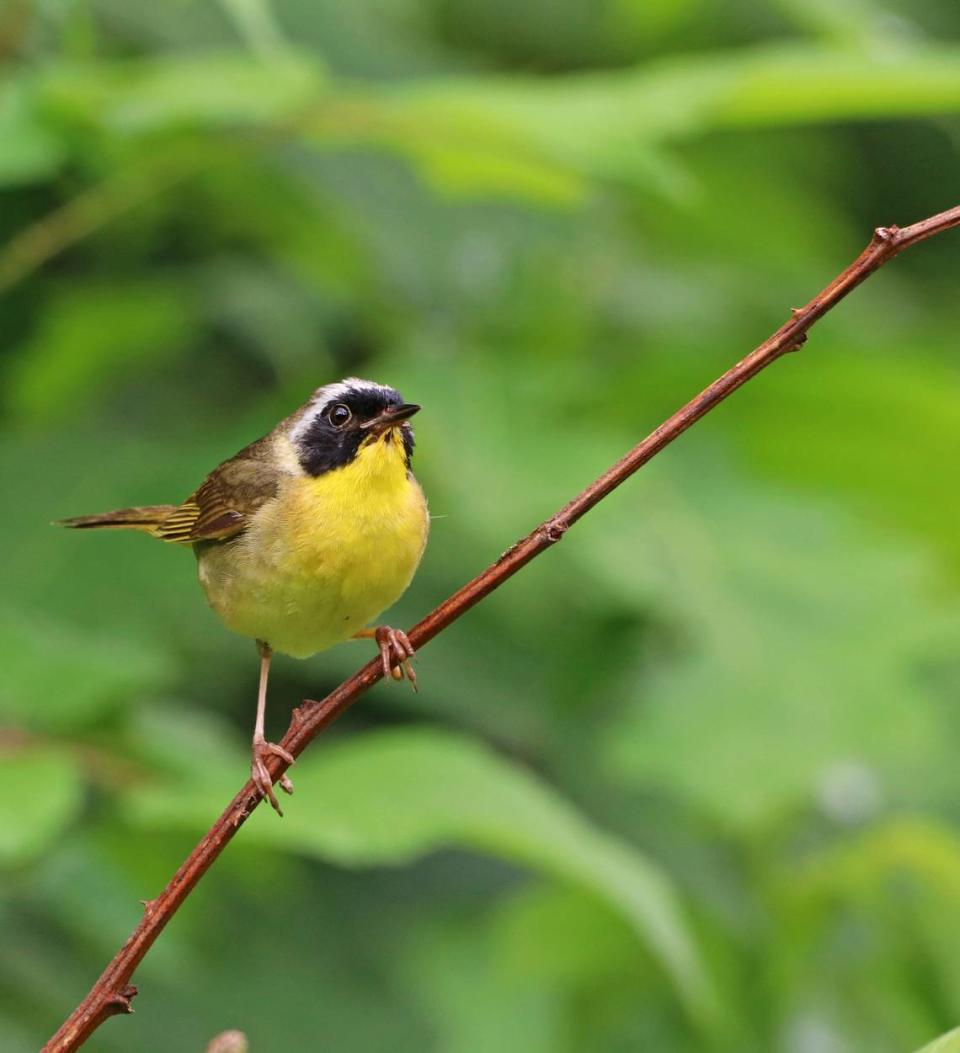Afield: What happens to a PA forest after a timber sale? This area offers an example
The northern-most part of State Game Lands 278, which lies just south of the Centre/Blair County border, contained a beautiful stand of timber. The forest canopy towered above the game land’s road, with many hardwoods — mostly oaks — having trunk diameters measuring over two feet. I visit there often — to scout, hunt, bird or just take a walk with my dog, binoculars and/or camera.
In October 2016, the ground was carpeted with acorns. Bucks rubbed their antlers on saplings and the woods were alive with migrating warblers and other birds.
However, earlier that year I suspected that a change was in the wind. Red paint and flagging marked some of the hardwood trees. A month or so later, I observed small paint marks on almost all of the larger hardwoods — two or three different colors.
I recognized the process — a Pennsylvania Game Commission timber sale was in the works.
Therefore, I wasn’t surprised when, one day in February 2017, the tranquility of my walk was invaded by the buzz of chainsaws and the rumble of skidders and log trucks. I steered well clear of the activity, but it was difficult not to hear the crash of trees and the loud thump when their huge trunks hit the ground. Forest giants were falling.
The logging operation ceased in late spring, and by mid-May, the logging company was repairing and improving the SGL access road. Large chunks of the once-beautiful stand of timber looked like a war zone.
I often talk with or get emails from hunters who criticize the PGC for selling timber. The usual comment: “The Game Commission only cares about selling trees, not the wildlife,” or something to that effect.
Many people stop thinking after seeing the destruction. They leave with a negative impression, but not me. My first thought was: this will be a deer and ruffed grouse paradise in a couple of years.
It is true that the Game Commission rakes in a lot of money each year through timber sales. If they did not care about wildlife, the agency could make much more. The forest stand could have been “high-ended” — with only the most valuable trees cut. However, the Game Commission contract required that all of the trees (except those so marked for exclusion) be cut, even if they won’t be used. Although this is more trouble for the logger and lessens the profit made by the Commission, the resulting young forest is better for many species of wildlife and future timber growth.
Excluded trees included shagbark hickories, which provide roosting sites for Indiana and little brown bats. Some dead trees were also left standing because of their wildlife value. A number of large seed trees were untouched to help with forest regeneration. Trees were also left standing in strips to provide wildlife corridors up the side of the mountain.
I did not have to wait years to see recovery. What looked barren in May was a jungle of life by late summer. Seedlings and stump sprouts were shooting up everywhere — oak, maple, birch, beech and basswood. Blackberries and raspberry canes — both important wildlife species — reached chest high. Goldenrods and milkweeds provide nectar for bees and butterflies. Elderberries are bearing fruit. A deer paradise already existed in much of the cut areas!

Six years have gone by, and it is time to revisit SGL 278. The tallest regenerating trees are now 15 feet tall. The species are diverse — red and white oak, red maple, beech, birch, basswood, tulip, ash, white pine and hickory make up a thicket which provides browse and cover for deer, as well as cover for bears and other animals. There is also a smattering of pioneer species on the site, such as staghorn sumac, elderberry and Hercules club.
The area teems with wildlife. I have observed numerous bucks, does with fawns, woodcock, hen wild turkeys with poults and even a bobcat.
There is no doubt that bird species have changed. An area that was dominated by deep woods birds seven years ago now has chestnut-sided, prairie, blue-winged and golden-winged warblers, as well as common yellowthroats, indigo buntings, Baltimore orioles, catbirds, towhees and others. A pair of red-headed woodpeckers excavated a cavity nest in one of the standing white oaks and successfully fledged a brood in 2017. It was likely the only red-headed woodpecker nest for 15 miles in any direction. As far as I can tell red-headed woodpeckers have nested in SGL 278 every year since.

Even if you appreciate trees, as I do, it is important to understand that timber harvests are a good thing if done correctly. The National Deer Association, the Ruffed Grouse Society and many other organizations all support wise timber cuts. Valuable and renewable forest products are harvested and, contrary to popular misconceptions, wildlife (including many non-game species) benefits.
Mark Nale, who lives in the Bald Eagle Valley, is a member of the Pennsylvania Outdoor Writers Association and can be reached at MarkAngler@aol.com .

